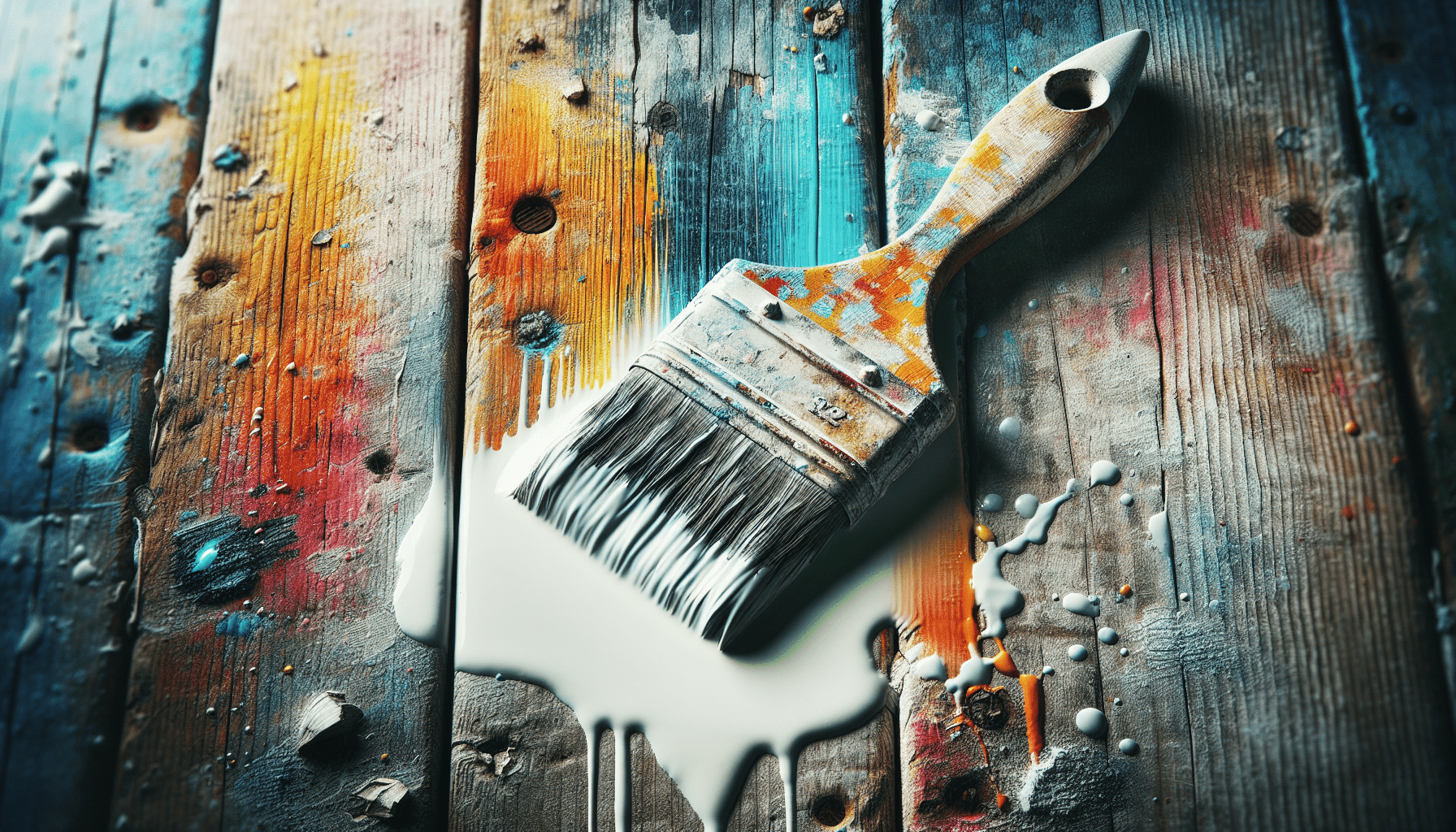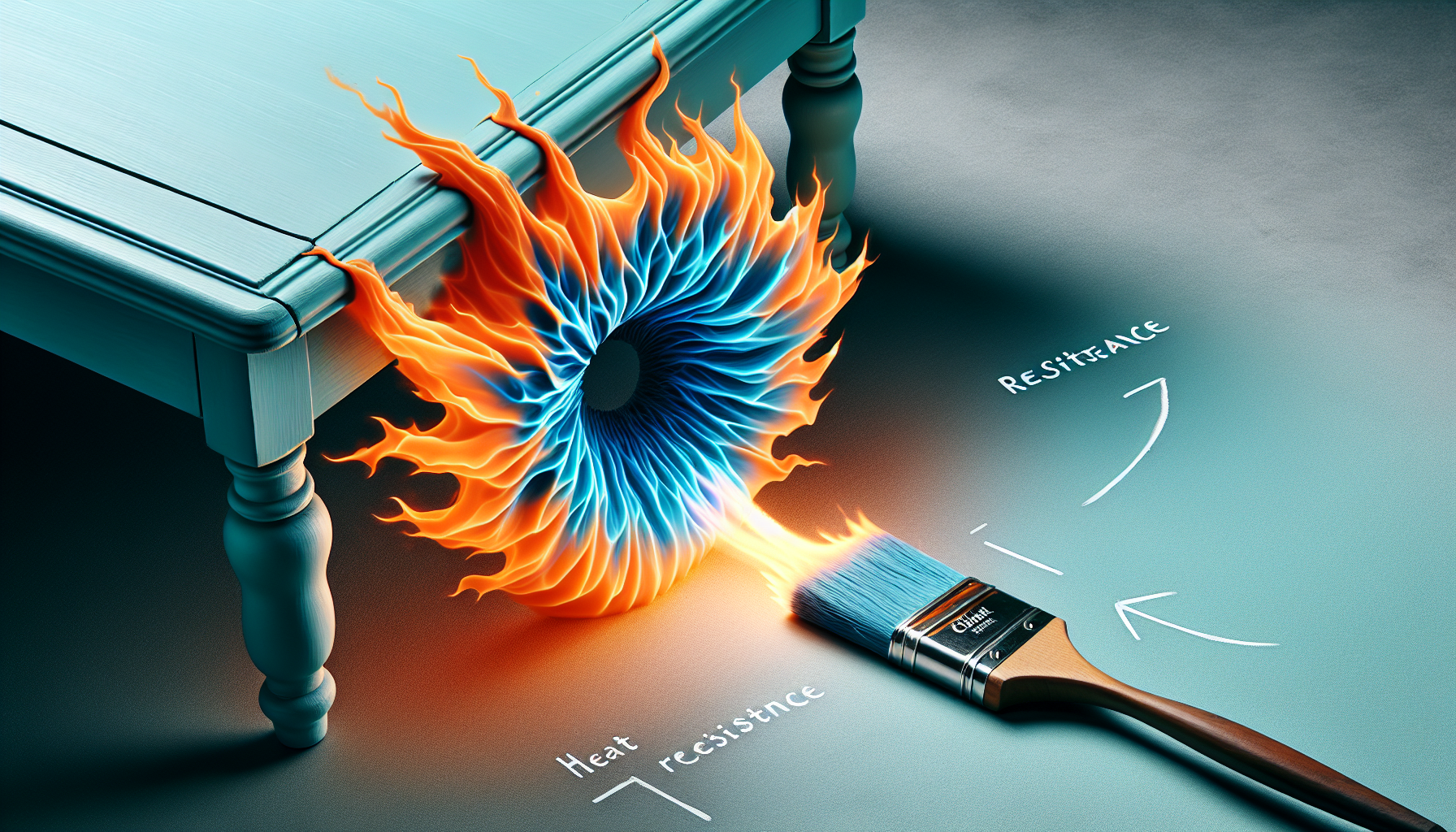When preparing to paint furniture with chalk paint, it is essential to start with a clean and smooth surface. This article explores the importance of cleaning furniture before applying chalk paint and highlights the best methods and tools to achieve optimal results. By understanding the proper cleaning techniques, you can ensure that your furniture is free from dirt, grime, and other substances that might impede the paint’s adherence and overall finish.
Why cleaning is important before chalk painting
Before embarking on a chalk painting project, it is crucial to thoroughly clean the furniture you plan to paint. Cleaning serves several purposes and plays a significant role in ensuring the success of your chalk painting endeavor.
Remove dirt and grime
Over time, furniture accumulates dust and grime that can hinder the adhesion of the chalk paint. By thoroughly cleaning the surface, you remove this layer of dirt, allowing the paint to adhere properly. Additionally, getting rid of dirt and grime prevents them from becoming trapped under the paint, resulting in a smoother and more professional finish.
Remove grease and oils
Grease and oils, including fingerprints and cooking residue, can build upon the surface of furniture, especially in kitchen or dining areas. These substances create a barrier that inhibits the paint’s ability to adhere effectively. By cleaning and removing these grease and oil deposits, you ensure that the chalk paint can bond properly to the furniture, promoting durability and longevity.
Ensure smooth application of chalk paint
A clean and smooth surface is essential for achieving a flawless chalk paint finish. Any imperfections, such as bumps, rough patches, or debris, can be magnified and affect the overall appearance of the painted furniture. Cleaning the surface before painting allows for a smoother application, resulting in a more professional and aesthetically pleasing look.
Enhance paint adhesion
One of the main advantages of chalk paint is its exceptional ability to adhere to various surfaces. However, for optimal adhesion, it is important to start with a clean and properly prepared surface. Cleaning the furniture beforehand ensures that the paint can grip onto the surface effectively, reducing the chances of peeling, chipping, or uneven coverage.
Avoid trapped debris and particles
Inevitably, there will be particles of dust, lint, or other debris present in your painting area. Failing to clean the furniture before starting your chalk painting project may result in these particles becoming trapped under the paint, affecting the smoothness and quality of the finish. Thoroughly cleaning the furniture eliminates any potential contaminants, ensuring a clean and polished final result.
Tools and materials needed for cleaning
To effectively clean furniture before chalk painting, you will need a selection of tools and materials. Here is a list of essential items:
-
Soft bristle brush or vacuum cleaner: A soft bristle brush or vacuum cleaner with a brush attachment can be used to remove loose dust and dirt from the surface of furniture.
-
Microfiber cloths: Microfiber cloths are ideal for wiping down furniture and removing dirt, grime, and cleaning solutions with minimal lint or residue.
-
Bucket of warm water: Warm water serves as the base for creating cleaning solutions and rinsing the furniture.
-
Mild dish soap: A gentle dish soap is effective in removing grease, oils, and general dirt from furniture surfaces.
-
White vinegar: White vinegar is an excellent natural cleaner that can tackle tough stains and residue on various types of furniture.
-
Denatured alcohol: Denatured alcohol is a solvent that can effectively remove stubborn stains or deposits, particularly on metal surfaces.
Having these tools and materials readily available will enable you to clean your furniture efficiently and thoroughly before applying chalk paint.

Step-by-step guide to cleaning furniture before chalk painting
Following a systematic approach to cleaning your furniture will ensure that the surface is adequately prepared for chalk painting. Here is a comprehensive step-by-step guide:
Step 1: Remove loose dust and dirt
Before diving into the cleaning process, it is essential to eliminate any loose dust and dirt from the furniture surface. Use a soft bristle brush or vacuum cleaner with a brush attachment to gently remove these particles. Pay close attention to grooves, crevices, and hard-to-reach areas where dust may accumulate.
Step 2: Use a soft bristle brush or vacuum cleaner
Once the loose dust and dirt have been removed, use a soft bristle brush or vacuum cleaner again to thoroughly clean the surface of the furniture. This step helps to remove any remaining debris and prepare the furniture for a more detailed cleaning.
Step 3: Mix a solution of warm water and mild dish soap
In a bucket of warm water, combine a small amount of mild dish soap. This mixture will create a gentle cleaning solution that effectively removes grease, oils, and general dirt from the furniture surface.
Step 4: Test the cleaning solution on a small, inconspicuous area
Before using the cleaning solution on the entire furniture piece, it is crucial to perform a patch test on a small and inconspicuous area. This test ensures that the cleaning solution does not cause any damage or discoloration to the furniture. If there are no adverse effects, proceed to the next step.
Step 5: Wipe down the furniture with a microfiber cloth dampened in the cleaning solution
Dip a microfiber cloth into the cleaning solution and wring out any excess liquid. Gently wipe down the furniture, taking care to cover all surfaces. Pay close attention to areas with visible stains or greasy residue, as these may require more focused cleaning.
Step 6: Remove tough stains or residue with white vinegar or denatured alcohol
For stubborn stains or residues that the mild dish soap solution might not completely remove, you can switch to more potent cleaning agents. White vinegar is highly effective for tackling a wide range of stains, while denatured alcohol is particularly useful for removing tough deposits on metal surfaces. Apply a small amount of the selected cleaner to a clean microfiber cloth and gently scrub the affected areas.
Step 7: Rinse the furniture with clean water
After cleaning the furniture with the cleaning solution and/or targeted cleaners, rinse the furniture thoroughly with clean water. This step helps to remove any leftover cleaning solution or residue, ensuring a clean and neutral surface for the chalk paint to adhere to.
Step 8: Allow the furniture to dry completely before painting
Before proceeding to the chalk painting stage, it is important to allow the furniture to dry completely. This ensures that no moisture is trapped under the paint, which could lead to bubbling, peeling, or other issues. Give the furniture ample time to air dry or use a clean, dry microfiber cloth to speed up the drying process.
Specific considerations for different types of furniture
While the general cleaning steps discussed above apply to various types of furniture, it is important to consider specific factors and tailor your cleaning approach accordingly. Different furniture materials may require special care or alternative cleaning methods to ensure optimal results.
Wood furniture
Wood furniture requires careful attention and specific cleaning techniques to avoid damage. Before cleaning, check for any signs of existing finish, such as varnish or polyurethane. If the surface is finished, it is important to avoid excessive water, as it can penetrate and damage the wood. Instead, use a wood-specific cleaner or a mixture of equal parts warm water and white vinegar to clean wood furniture.
Upholstered furniture
Cleaning upholstered furniture requires a delicate touch to avoid causing fabric damage. Before starting the cleaning process, check the cleaning instructions provided by the manufacturer. Spot clean stains using a mild upholstery cleaner, following the product instructions. Additionally, vacuum the upholstered surfaces to remove dust, pet hair, and other particles before proceeding with the general cleaning steps outlined earlier.
Metal furniture
Metal furniture, such as iron or aluminum, can benefit from regular cleaning to prevent rust and maintain its appearance. Start by removing any loose rust or flaking paint using a metal brush or sandpaper. Then, clean the surface with a mixture of warm water and mild dish soap, using a soft bristle brush or cloth. Finally, ensure that the furniture is thoroughly dried after cleaning to prevent future rusting.
Laminate furniture
Laminate furniture is known for its durability and easy maintenance. However, certain precautions should be taken to prevent damage to the laminate surface. Avoid using abrasive cleaners or scrubbing pads that can scratch the laminate. Instead, clean the surface with a mixture of warm water and mild dish soap, using a soft cloth or sponge. Wipe dry immediately to prevent water damage.

Cleaning tips for wood furniture
When cleaning wood furniture before chalk painting, it is important to consider specific tips that can help preserve the natural beauty of the wood and maintain its integrity.
Check for any signs of existing finish
Before cleaning wood furniture, inspect the surface for any signs of an existing finish, such as varnish or polyurethane. This step is crucial as it determines the cleaning method and prevents potential damage. If the furniture is finished, avoid excessive water exposure. If the furniture is unfinished or lacks a protective coating, you can follow the general cleaning steps provided earlier.
Avoid using excessive water on bare wood
When cleaning bare wood furniture, minimizing water exposure is crucial to prevent the wood from absorbing moisture and potentially warping or staining. Instead, opt for a wood-specific cleaner or create a mild cleaning solution by mixing equal parts warm water and white vinegar. Apply this solution sparingly with a damp cloth, and immediately dry the furniture afterward.
Use a wood-specific cleaner or vinegar solution
Wood-specific cleaners are formulated to effectively clean wood surfaces without causing damage. These cleaners help remove dirt, grime, and stains from wood furniture while preserving its natural beauty. Alternatively, a vinegar solution made by mixing equal parts warm water and white vinegar can be used to clean wood furniture. Vinegar helps neutralize odors and has natural cleaning properties suitable for many types of wood.
Using these cleaning tips ensures that your wood furniture is properly prepared for chalk painting, allowing the paint to adhere well and produce a stunning finish.
Cleaning tips for upholstered furniture
Cleaning upholstered furniture requires special care to ensure that the fabric is not damaged during the cleaning process. Consider the following tips to properly clean upholstered furniture before applying chalk paint:
Check the cleaning instructions provided by the manufacturer
Before starting the cleaning process, refer to the cleaning instructions provided by the manufacturer. Upholstered furniture often comes with specific care guidelines tailored to the fabric type. Adhering to these instructions helps maintain the fabric’s integrity and prevent potential damage.
Spot clean stains with a mild upholstery cleaner
For stains or spots on upholstered furniture, it is best to use a mild upholstery cleaner specifically formulated for the type of fabric. Spot cleaning allows you to target specific areas without wetting the entire upholstery. Follow the product instructions on the upholstery cleaner for optimal results. After spot cleaning, it is recommended to proceed with the general cleaning steps outlined earlier to clean the entire upholstered surface.
Vacuum upholstered surfaces to remove dust and pet hair
Before applying any cleaning solutions, vacuuming upholstered furniture is essential to remove loose dust, dirt, and pet hair. Use an upholstery attachment or a soft brush attachment to gently vacuum the surface. This step helps prevent the accumulation of debris, ensures cleaner results, and facilitates the overall cleaning process.
Taking these cleaning tips into consideration will help you clean and prepare your upholstered furniture for chalk painting effectively.
Cleaning tips for metal furniture
Metal furniture can benefit from regular cleaning to maintain its appearance and prevent rust. Consider the following cleaning tips when preparing metal furniture for chalk painting:
Remove any loose rust or flaking paint
Before cleaning metal furniture, address any loose rust or flaking paint on the surface. Use a wire brush or sandpaper to gently remove these imperfections. This step ensures a smoother surface for the chalk paint to adhere to and prevents the spread of rust.
Clean with a mixture of warm water and mild dish soap
For general cleaning of metal furniture, create a solution of warm water and mild dish soap. Dip a soft bristle brush or cloth into the solution and gently scrub the surface, paying attention to areas with visible dirt, grime, or stains. Rinse thoroughly with clean water to remove any soapy residue.
Dry thoroughly to prevent future rusting
After cleaning metal furniture, it is essential to dry it thoroughly. This helps prevent the occurrence of future rusting. Use a clean, dry cloth or allow the furniture to air dry completely before proceeding with chalk painting.
These cleaning tips will ensure that your metal furniture is adequately cleaned and prepped for the chalk painting process.
Cleaning tips for laminate furniture
Laminate furniture is known for its durability and resistance to stains. Follow these cleaning tips to properly prepare laminate furniture for chalk painting:
Avoid using abrasive cleaners that can scratch the surface
When cleaning laminate furniture, it is important to avoid using abrasive cleaners, scrubbing pads, or harsh chemicals. These may scratch or damage the laminate surface, compromising its appearance. Instead, opt for a mild cleaning solution using warm water and a small amount of mild dish soap.
Clean with a mixture of warm water and mild dish soap
Create a gentle cleaning solution by mixing warm water with a small amount of mild dish soap. Dip a soft cloth or sponge into the solution and wring out any excess liquid. Gently wipe the surface of the laminate furniture, paying attention to any stains or dirt. Rinse with clean water to remove any soapy residue.
Wipe dry to prevent water damage
After cleaning, it is important to wipe the laminate furniture thoroughly to prevent water damage. Excess moisture left on the surface can seep into the laminate, potentially causing warping or reducing its lifespan. Use a clean, dry cloth to wipe the furniture dry immediately after cleaning.
By following these cleaning tips, you can ensure that your laminate furniture is properly cleaned and ready for chalk painting.
Safety precautions while cleaning
While cleaning furniture before chalk painting, it is essential to prioritize safety. Here are some safety precautions to keep in mind:
Work in a well-ventilated area
When cleaning furniture, it is important to work in a well-ventilated area. Open windows or doors to allow fresh air circulation. This precaution helps minimize the inhalation of cleaning solution fumes and ensures a healthier environment.
Wear gloves to protect your hands
To protect your hands from potential skin irritation or the drying effects of cleaning solutions, wear protective gloves. Rubber or latex gloves provide a barrier between your skin and cleaning agents, reducing the risk of contact dermatitis or allergic reactions.
Avoid using harsh chemicals
While cleaning furniture, it is advisable to avoid using harsh chemicals unless necessary. Opt for mild cleaning solutions, such as warm water and mild dish soap, whenever possible. Harsh chemicals can be detrimental to your health and may also cause damage to certain furniture materials.
Keep children and pets away from the cleaning area
To prevent accidents or exposure to cleaning solutions, it is important to keep children and pets away from the cleaning area. Store all cleaning products safely and out of reach to avoid any unintended ingestion or contact.
By following these safety precautions, you can ensure a safe and successful furniture cleaning process.
Conclusion
Properly cleaning furniture before embarking on a chalk painting project is crucial for achieving a beautiful and long-lasting finish. By removing dirt, grime, grease, and other contaminants, you create an ideal surface for the chalk paint to adhere to. Following the step-by-step guide and considering the specific cleaning tips for different types of furniture will help you prepare your furniture for chalk painting effectively.
Remember to work in a well-ventilated area, wear gloves to protect your hands, and avoid using harsh chemicals whenever possible. Also, keep children and pets away from the cleaning area to ensure their safety.
By prioritizing thorough cleaning and taking necessary safety precautions, you can set the stage for a successful chalk painting project that transforms your furniture into stunning pieces of art.



